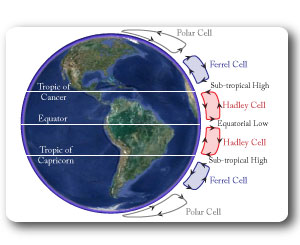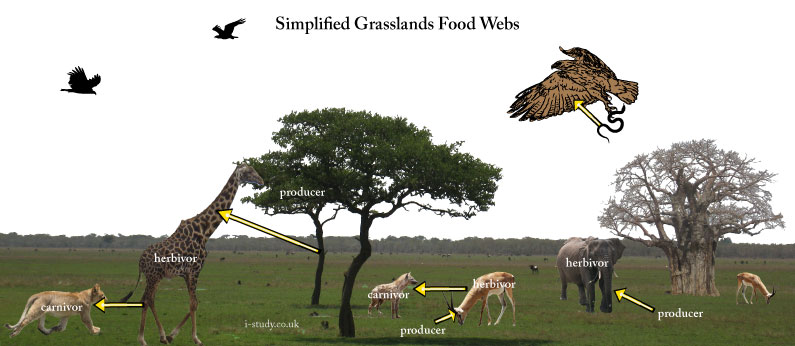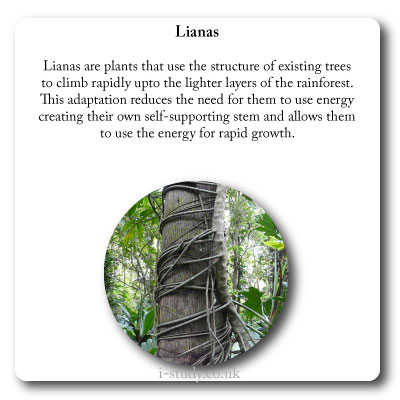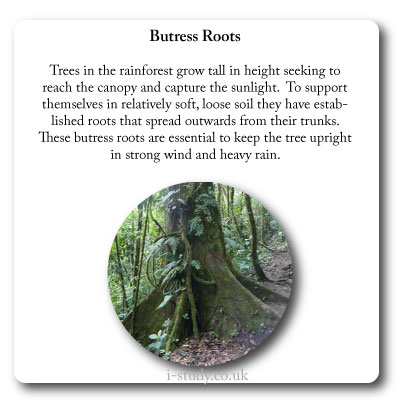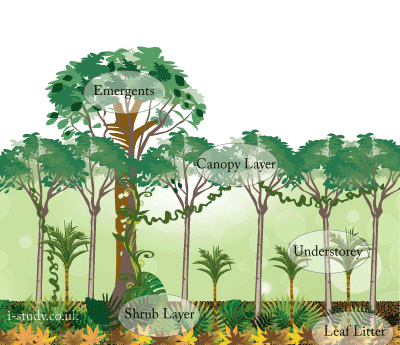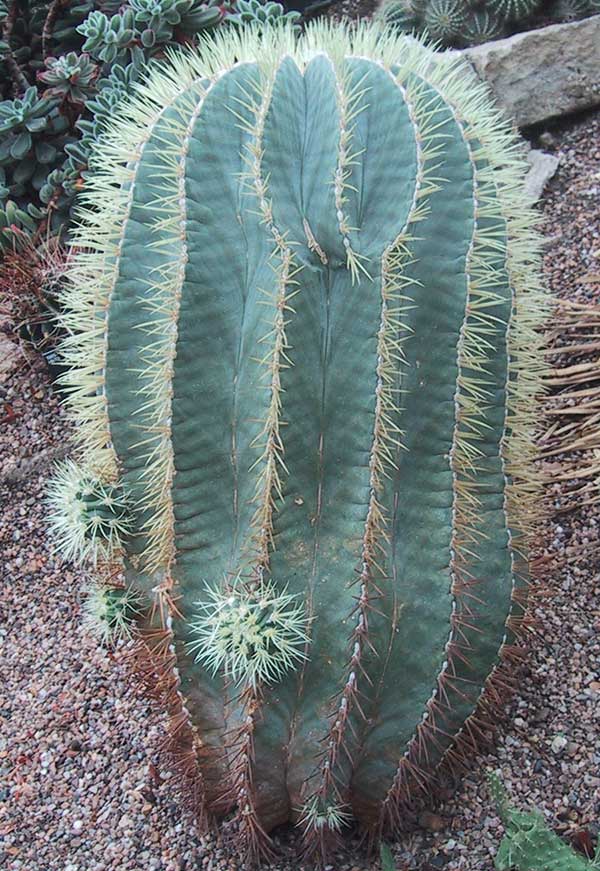Hot desert ecosystems are found in the sub-tropical high pressure regions (see figure 6.3) north and south of the the equator.
High pressure and relatively close proximity to the equator result in clear skies and high levels of solar radiation recieved. The clear skies result in very low rainfall totals aswell as hot daytime temperatures but cold nights as the heat escapes easily.
Vegetation Adaptations:
Figure 6.13: wide circular stem allows cacti to store lots of water after rains. Waxy skin reduces water loss through evaporation. Sharp spines protect the cacti from being eaten by animals.
Figure 6.14: the ridges running down the stem allow the cactus to swell considerably to store extra water wehn it is available.
Cacti often have either long shallow roots that spread out to absorb any rainfall or they have long deep taproots to reach groundwater.
Animal adaptations:
Figure 6.15: Camels have wide feet to spread their weight on the sand, long eyelashed to protect agaist wind blown dust and sand, humps to store extra water and long legs to raise their bodies away from the surface where the temperature is highest.
Snakes and insects burrow into the sand during the day to avoid the heat.
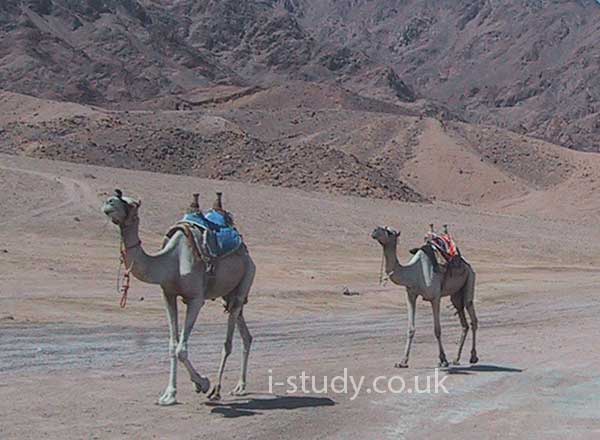 Figure 6.15: Camels walking in Egypt
Figure 6.15: Camels walking in Egypt
Tasks
- Use table 6.2 to draw a correctly labled desert climate graph.
- Describe and explain the variations through the year.
| Month |
Jan |
Feb |
Mar |
Apr |
May |
June |
July |
Aug |
Sept |
Oct |
Nov |
Dec |
Temp0C |
19 |
21 |
24 |
28 |
32 |
35 |
35 |
35 |
33 |
30 |
26 |
21 |
| Rainfall (mm) |
7 |
4 |
4 |
2 |
0 |
0 |
0 |
0 |
0 |
1 |
3 |
5 |
Table 6.2: Cairo Climate Data



